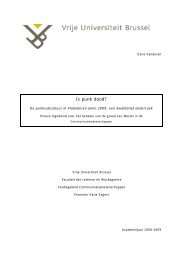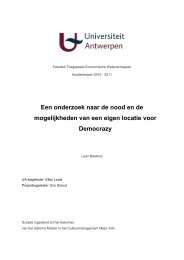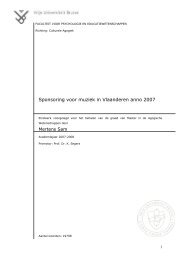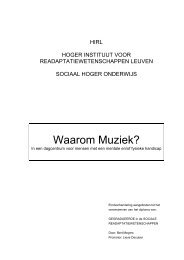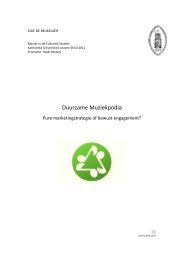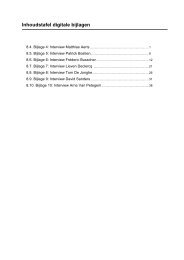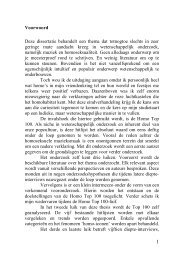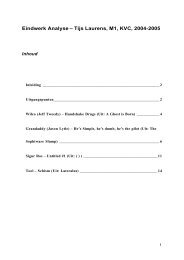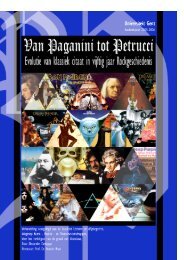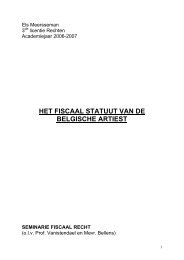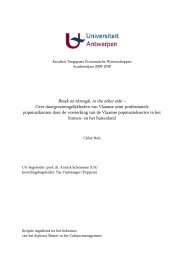Hip hop identity in a township reality. - Poppunt
Hip hop identity in a township reality. - Poppunt
Hip hop identity in a township reality. - Poppunt
Create successful ePaper yourself
Turn your PDF publications into a flip-book with our unique Google optimized e-Paper software.
Code-switched speech itself by the way, can be seen as a language as such.<br />
Situations occur where speakers are unil<strong>in</strong>gual, but they do use a mixed code. If for<br />
<strong>in</strong>stance L<strong>in</strong>gala-French is the only th<strong>in</strong>g a person can speak, then that codeswitched<br />
form has the function of a language for that person. Of course, codeswitch<strong>in</strong>g<br />
is not a historical language (<strong>in</strong> contradist<strong>in</strong>ction to other languages <strong>in</strong> the<br />
textbook sense of the word). First of all it is not transmitted from one generation to<br />
another. Code-switched speech is also not stable <strong>in</strong> time, it is reproduced <strong>in</strong> every<br />
new sociocultural situation.<br />
Code-switch<strong>in</strong>g is a ‘language’ that can be found all over the world <strong>in</strong> the behaviour<br />
of multil<strong>in</strong>gual speakers. The functions of code-switch<strong>in</strong>g (which will be discussed<br />
below) are similar as well, even for the most diverse comb<strong>in</strong>ations of languages. To<br />
analyse all those code-switch<strong>in</strong>g varieties, clear concepts and term<strong>in</strong>ologies are<br />
<strong>in</strong>dispensable. There is a strong need for this clarity. Vague and obscure def<strong>in</strong>itions<br />
and terms seem to be the rule rather than the exception. A simple example: one<br />
makes frequent usage of the term ‘language’, but never explicitly states what a<br />
language is. Everybody can def<strong>in</strong>e this concept for himself of course, and every<br />
<strong>in</strong>dividual can fill <strong>in</strong> for his own what he categorises under the terms language,<br />
dialect, sociolect and so on. This does not necessarily co<strong>in</strong>cide with the def<strong>in</strong>itions<br />
l<strong>in</strong>guists developed, but there is need for a generally accepted and applicable<br />
def<strong>in</strong>ition. Categories need to be developed that can be used <strong>in</strong> every multil<strong>in</strong>gual<br />
context.<br />
After clarify<strong>in</strong>g and improv<strong>in</strong>g the statements of the first op<strong>in</strong>ion, we can move up<br />
to a more accurate and current def<strong>in</strong>ition of code-switch<strong>in</strong>g. S<strong>in</strong>ce Ben Rampton<br />
provides us with a well structured theoretical and practical framework <strong>in</strong> reference<br />
to code-switch<strong>in</strong>g <strong>in</strong> his book ‘Cross<strong>in</strong>g. Language and ethnicity among adolescents’<br />
(1998), we will cite the description he uses here:<br />
“Code-switch<strong>in</strong>g is an <strong>in</strong>group phenomenon restricted to those who share the<br />
same expectations and rules of <strong>in</strong>terpretation for the use of two languages.<br />
Code-switch<strong>in</strong>g is thus usually seen as a device used to affirm participants’<br />
claims to membership and the solidarity of the group <strong>in</strong> contrast to<br />
outsiders.” (Woolard cited <strong>in</strong> Rampton, 1998a: 270)<br />
The research and analyses of the phenomenon of code-switch<strong>in</strong>g is mostly done<br />
with regard to youngsters (who are members of a m<strong>in</strong>ority group) and their peer<br />
group. This is also the case with our research. Biographical <strong>in</strong>formation about the<br />
participants is described <strong>in</strong> another part of the thesis, but we can already say that



